Designing Thriving Environments for Older Adults to Design Thriving Environments for All
Presenter: Jenna Mikus, PhD Candidate, Queensland University of Technology
Poster Presentation
Background
People spend more than 90% of their time indoors. As a consequence, buildings are key influencers on the health and vitality of the people who inhabit them. Recent research details the possibility of designing buildings for positive health impact. Further, given the prevalence of “smart” building technology in the built environment, it is hypothesized that there may be a way to use technology to not just support health and wellness in our built environment but to prompt occupants to thrive. Unfortunately, to date, research has shown that “smart” technology, buildings, and cities-related products and services are on the rise yet oftentimes implemented without the involvement of intended users. This commonly results in over-engineered designs, duplicative hardware and software, and short-sighted solutions that only benefit a small subset of the population—most commonly, white males between the ages of 20 and 35—and overlook others, including the growing older adult population.
Research Focus
According to the United Nations Department of Economic and Social Affairs, the percentage of people in the world ages 50-74 will more than double between 2020 and 2030 and ages 75+ nearly quadruple in that time period. The older adult population is growing, yet the design community continues to struggle to optimize designing for the population’s physical, mental, and social health imperatives while accounting for their ever-improving tech savviness. This poster is based on ongoing research exploring how “smart building” technologies can be engaged in the built environment by older adults to enhance health and wellness. With this research, the author aims to employ co-design principles with and for the targeted older adult demographic while simultaneously exploring if it is possible to use that method of engagement as an approach to design for all.
